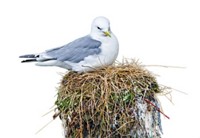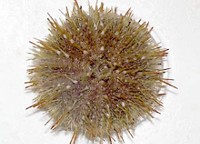Advertisement
Grab your lab coat. Let's get started
Welcome!
Welcome!
Create an account below to get 6 C&EN articles per month, receive newsletters and more - all free.
It seems this is your first time logging in online. Please enter the following information to continue.
As an ACS member you automatically get access to this site. All we need is few more details to create your reading experience.
Not you? Sign in with a different account.
Not you? Sign in with a different account.
ERROR 1
ERROR 1
ERROR 2
ERROR 2
ERROR 2
ERROR 2
ERROR 2
Password and Confirm password must match.
If you have an ACS member number, please enter it here so we can link this account to your membership. (optional)
ERROR 2
ACS values your privacy. By submitting your information, you are gaining access to C&EN and subscribing to our weekly newsletter. We use the information you provide to make your reading experience better, and we will never sell your data to third party members.
Environment
Owl Eggs Reveal Complex Pollutant Patterns
Persistent Pollutants: Pollutant levels in owl eggs fluctuate with changes in climate and food sources
by Sarah Webb
August 29, 2011

An animal’s load of persistent organic pollutants depends on more than the amount of the chemicals in the environment, according to a long-term study of tawny owls. The study connects variations of pollutant levels in the owls’ eggs with changes in climate conditions and the birds’ food supply (Environ. Sci. Technol., DOI: 10.1021/es201786x).
Every year since 1986, Georg Bangjord, a study co-author and bird enthusiast who lives in Trondheim, Norway, has collected egg samples from more than 100 tawny owl nest boxes. Jan Bustnes of the Norwegian Institute of Nature Research and his colleagues have been studying the concentrations of pollutants in these eggs. The owls accumulate chemicals, including polychlorinated biphenyls (PCBs), DDT, and polybrominated diphenyl ethers (PBDEs) from their prey, and store them in their fat. When the females lay their eggs each year, they transfer some of those chemicals to the eggs. In 2007, Bustnes and his colleagues reported that concentrations of these chemicals in the eggs had declined since the 1980s (Environ. Sci. Technol., DOI: 10.1021/es071581w).
Despite the overall decline, the researchers also noticed significant year-to-year variations in the pollutant levels. Bustnes and his colleagues decided to examine how variables such as climate conditions or food availability might have affected the chemicals’ levels. So they combined their pollutant data with yearly observations of prey numbers and snow depth, along with climate data from the North Atlantic Oscillation index. They then ran statistical analyses to look for trends.
Owl eggs had greater levels of PCBs and DDT during winters with lower temperatures, periods of high snowfall, and seasons with smaller populations of their preferred prey, voles. Colder temperatures and scarce food sources could prompt owls to burn more of their fat stores, which contain high levels of the pollutants. As the owls metabolize the fat, greater amounts of the pollutants enter their blood stream and eventually accumulate in their eggs, Bustnes says. Under these conditions, the owls also lay fewer eggs, which could further concentrate the chemicals, he says.
The trend for PBDEs, the chemicals found in flame retardants, was slightly different. Levels of those chemicals also increased in eggs during colder, snowier winters, but only when voles were plentiful. Bustnes says there isn’t a clear explanation for the PBDE trend.
Integrating food supply data with physical data, such as the North Atlantic Oscillation index, is a new and interesting way to understand variations in pollutant loads, says Craig Hebert, a research scientist at Environment Canada, the nation’s environmental agency. The study “emphasizes how complex the interpretation of some of these temporal trends can be,” and why researchers should consider multiple variables when analyzing pollutant levels in animals, he says.
Karen Foster, a postdoctoral researcher at Trent University, in Canada, adds that the data suggest that simply reporting the concentrations of pollutants measured in wildlife is not sufficient: “We really need to understand why we’re seeing these concentrations.”





Join the conversation
Contact the reporter
Submit a Letter to the Editor for publication
Engage with us on Twitter